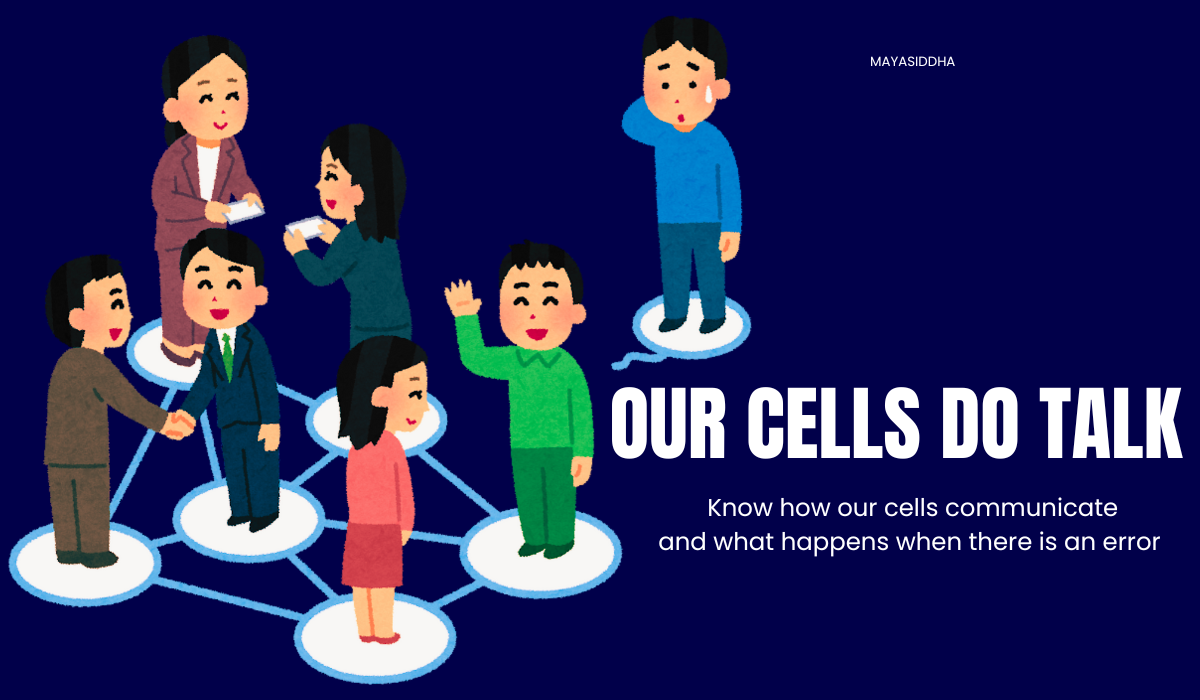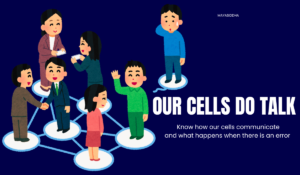Introduction
Do you know that our cells communicate with each other just like we do with our loved ones? In this blog, we will see how cells communicate to stay connected and function smoothly.
Why Cells Communicate ?
Communication is a must to avoid misunderstanding, don’t you agree? The same principle applies to our bodies too.
Since we are made of numerous cells, they must communicate with one another to work together and function effectively.
Therefore, Cell communication is important for optimal cell function, growth, metabolism, secretion, immune response and maintaining homeostasis. When there is a communication error, our cells can’t perform well, leading to health issues.
How Cells Communicate ?
Cells communicate by sending signals, via which they exchange information with one another.
This communication is of two types –
- Intracellular communication: Communication that occurs within a cell, much like talking to ourselves.
- Intercellular communication: Communication that takes place between cells, similar to the conversation between two people.
In every conversation, there will be a speaker and a receiver. The speaker shares their thoughts, while the receiver listens, processes the words internally and then responds to the speaker accordingly. This analogy perfectly describes the process of cell-cell communication.
In fact, cells also deliver, receive, process and react accordingly. In cell communication, the signalling cell acts as the speaker while the target cell functions as the receiver.
Communication: The signalling cell sends a signal to the target cell, which receives that signal via its receptor. The target cell processes the signal internally and then modifies its function in response to that received signal.
Message: Those signals can be Neurotransmitters, Nucleotides, Nucleosides (Adenosine), Hormones, Cytokines, Gases, Ions, Drugs, Toxins etc. These signals are called Ligands or Signalling molecules.
These ligands bind to the receptor on the target cell and either activate or inactivate a certain function of the cell.
For eg. when the hormone Insulin binds to the insulin receptor on the target cell, the cell opens its door in response and allows glucose to enter. Here a function is activated by the ligand – cells open up their gates for glucose.
Without insulin or with the default insulin receptor, the glucose can’t enter the cell, leading to high blood sugar.
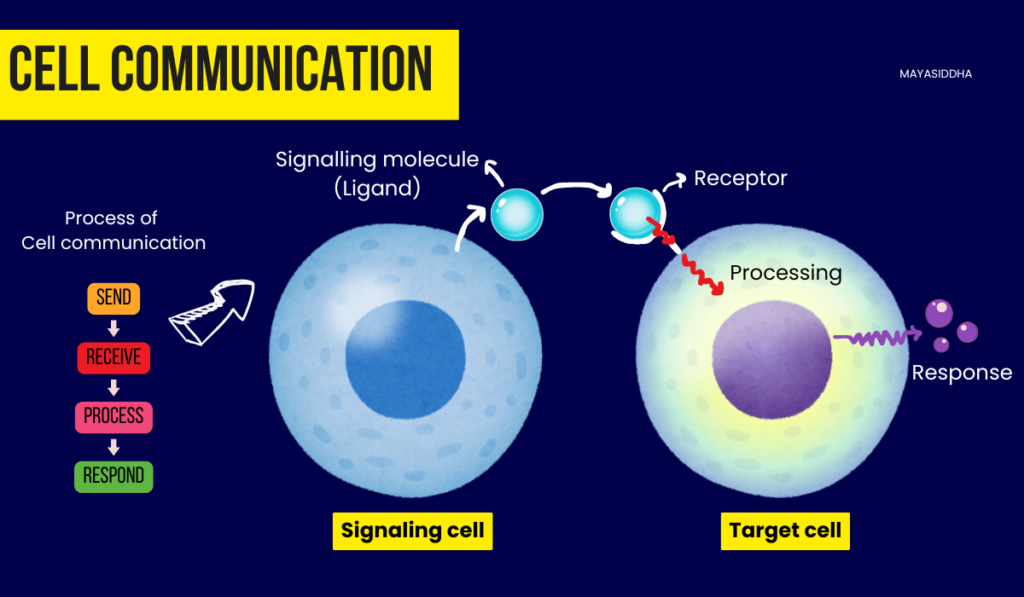
Sometimes parts of viruses and microbes also act as ligands which affect the normal functions of our cells and cause dis-eases.
Mediator: Receptors have a crucial role in cell communication. They receive the signal like a receiver and deliver that message to the target cell like a messenger. Hence, receptors play a dual role in cell communication. If you wanna know more about them, you can refer here.
Now let’s see different types of cell communication .
Styles of communication
There are 5 modes of cell communication, classified based on the distance it takes for the signal to reach the target cell.
Types of cell communication
1. Intracellular communication
Intracrine signalling – The signalling cell sends a signal to itself, where that signal binds to the receptor located within the same cell. Intracrine signalling entirely takes place within the cell, just as we talk to ourselves and respond based on our own thoughts.
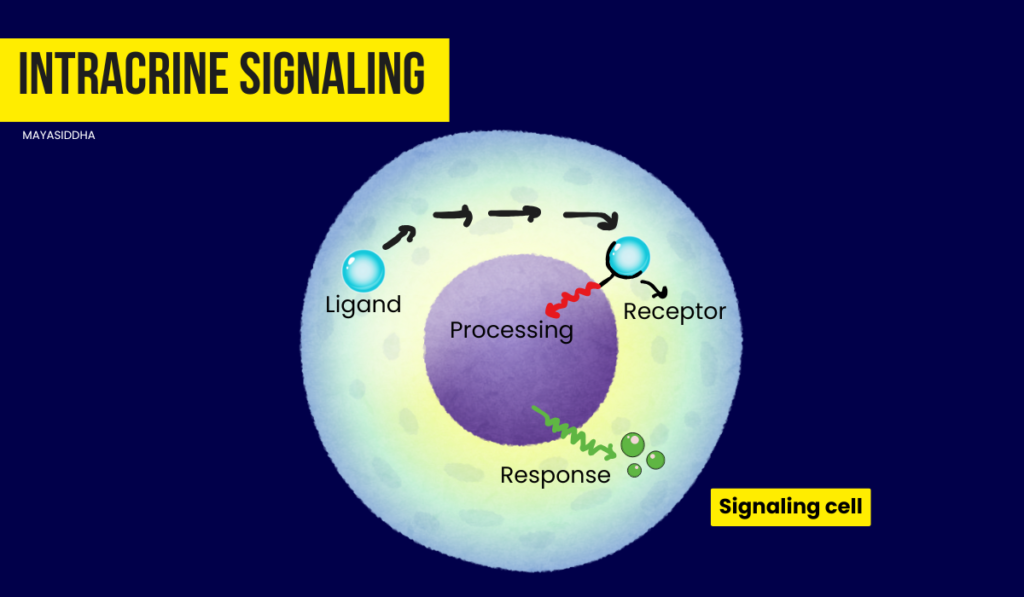
However, just as how others’ opinions can influence our thoughts and change our views and responses, intercellular communication also induces intracrine signalling and causes changes in the cell’s function.
2. Intercellular communication
(a) Autocrine signalling – It’s like mailing a letter to ourselves. The signalling cell sends a signal to itself and receives it via its own receptor located on the cell membrane. Eg. Macrophages.
When a cell communicates with itself, it comes under intracellular communication, isn’t it? However, in autocrine signalling, as the signalling molecule exits the cell and then re-enters, it is classified under intercellular communication.
Note: It’s different from intracrine signalling.
(b) Direct signalling – It’s like communication between very close friends. So this type of communication takes place between cells that are in direct and close contact with each other. This communication is also called Juxtacrine signalling.
The signalling cell directly delivers the signal to the nearby target cell either via the gap junctions* or by the regular ligand-receptor binding. Eg. Heart cells.
*Gap junctions are channels that allow the molecules to pass directly between two adjacent cells.
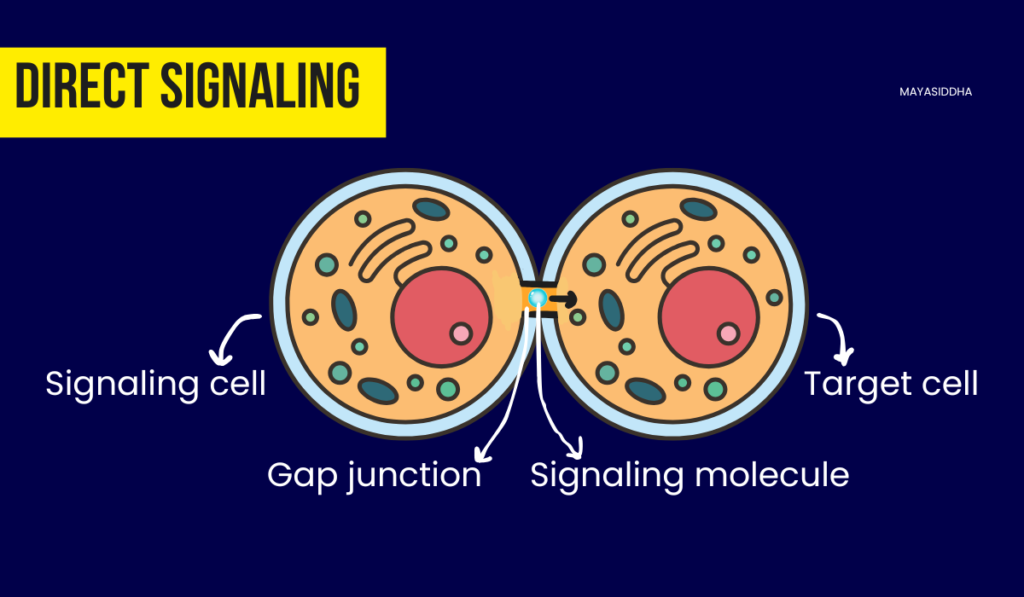
(c) Paracrine signalling – It resembles the communication between two people sitting next to each other with a small gap between them. The signalling cell sends a signal to the target cell, which receives that signal via its receptor. Eg. Nerve cells.
(d) Endocrine signalling – It’s like communication in a long-distance relationship. The signalling cell sends a signal to the target cell via the bloodstream, much like contacting the long-distance partner via mobile. E.g. Endocrine cells use endocrine cell signaling .
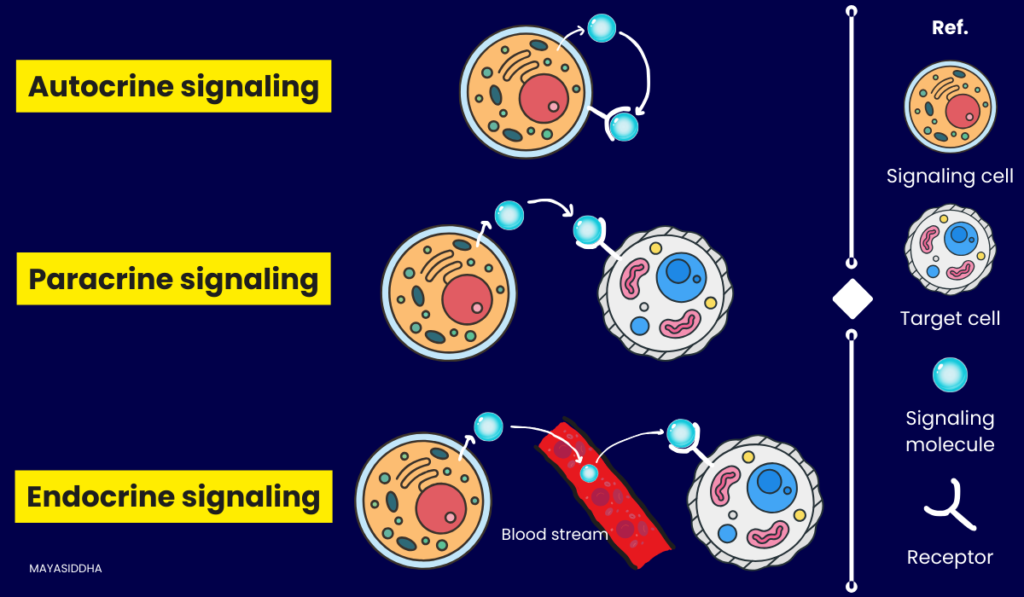
So, this is how our cells communicate with one another to function effectively.
Summary
We are made up of numerous cells, which work together to define who we are. Just like a team needs proper communication to complete a project effectively, our cells must communicate with one another to function properly without issues.
Cells communicate by sending signals a.k.a. Ligands or signalling molecules. The cell that sends a signal is called a signalling cell and the one that receives that signal is called a target cell.
The signalling cell sends a signal to the target cell, which receives that signal via its receptor. The target cell then modifies its function in response to that received signal.
This cell communication is categorized into two types-Intracellular and Intercellular communication, which can be compared to talking to ourselves and talking to others respectively.
These two types are further divided based on the distance it takes for the signalling molecule to reach the target cell. They are Intracrine, Autocrine, Juxtacrine, Paracrine and Endocrine signalling, much like talking to ourselves, mailing to ourselves, direct communication, nearby conversation and long-distance communication. Any error in this communication can make us fall ill.
Reference
1. Clark, M. A., Douglas, M., & Choi, J. (2018). Biology 2e. OpenStax. https://openstax.org/details/books/biology-2e.
2. Khalil B, Miller EJ, Lappin SL. Physiology, Cellular Receptors. [Updated 2024 Sep 19]. In: StatPearls [Internet]. Treasure Island (FL): StatPearls Publishing; 2024 Jan-. Available from: https://www.ncbi.nlm.nih.gov/books/NBK554403/
No comments on this post so far:
Add your Thoughts:
Loading comments...

